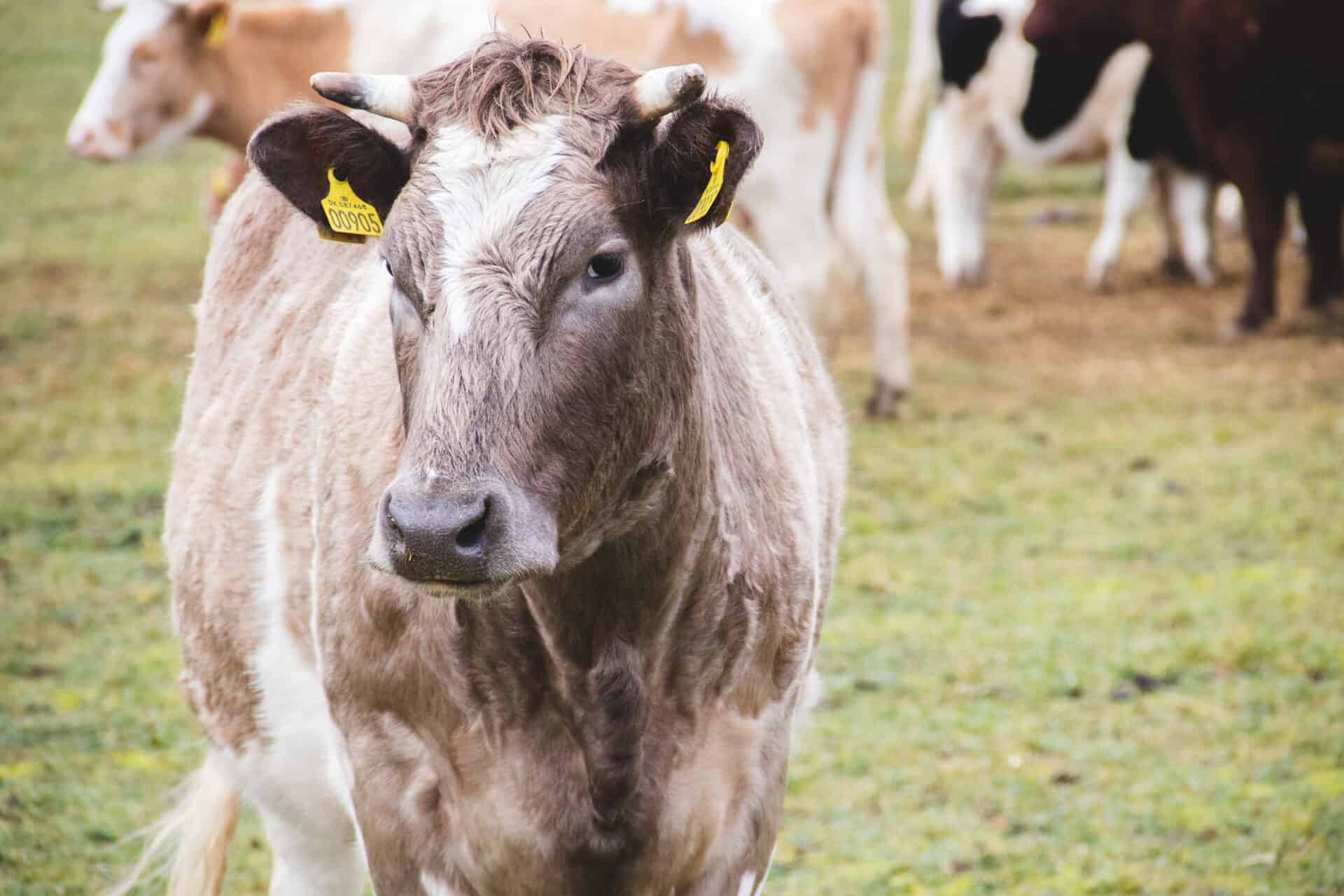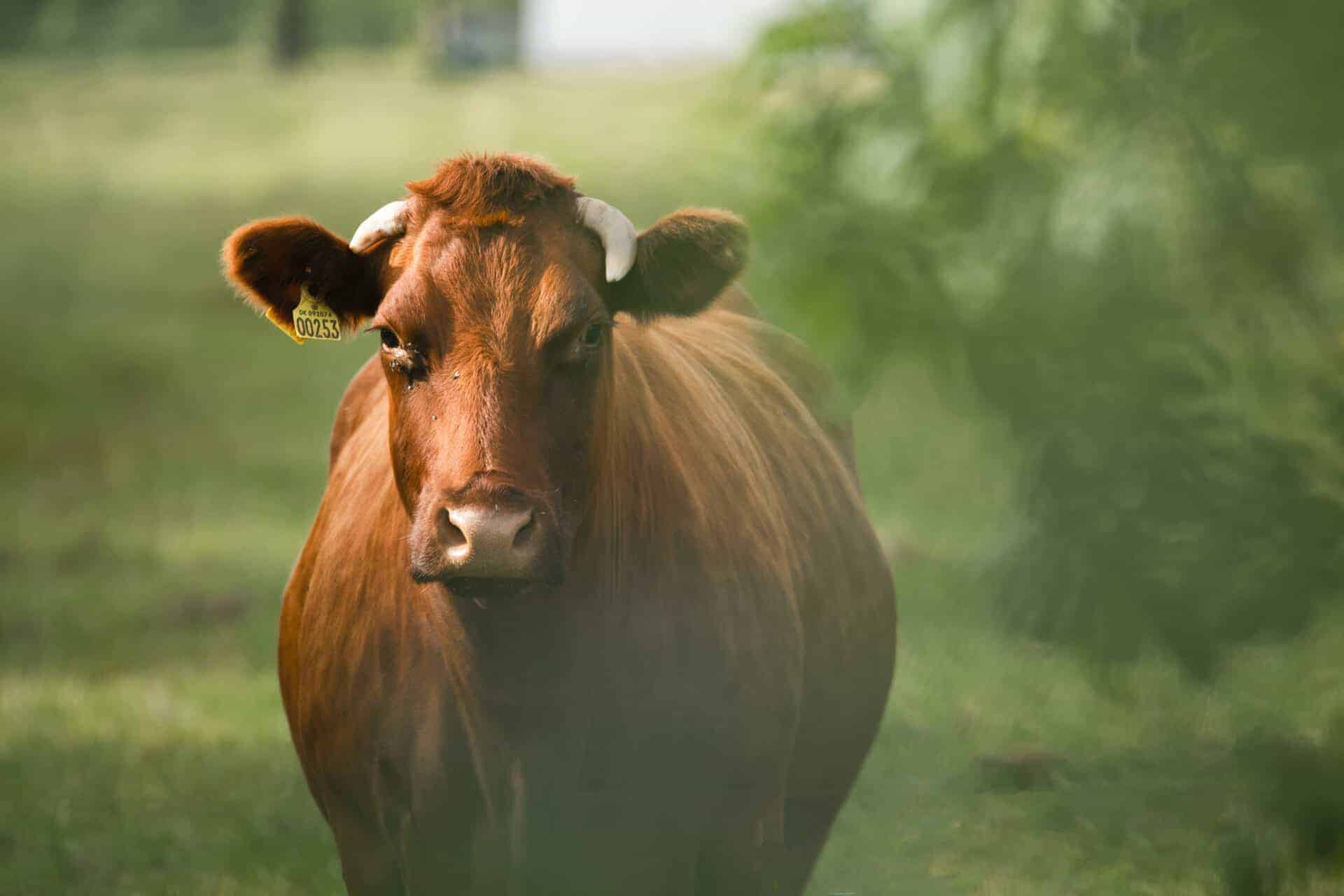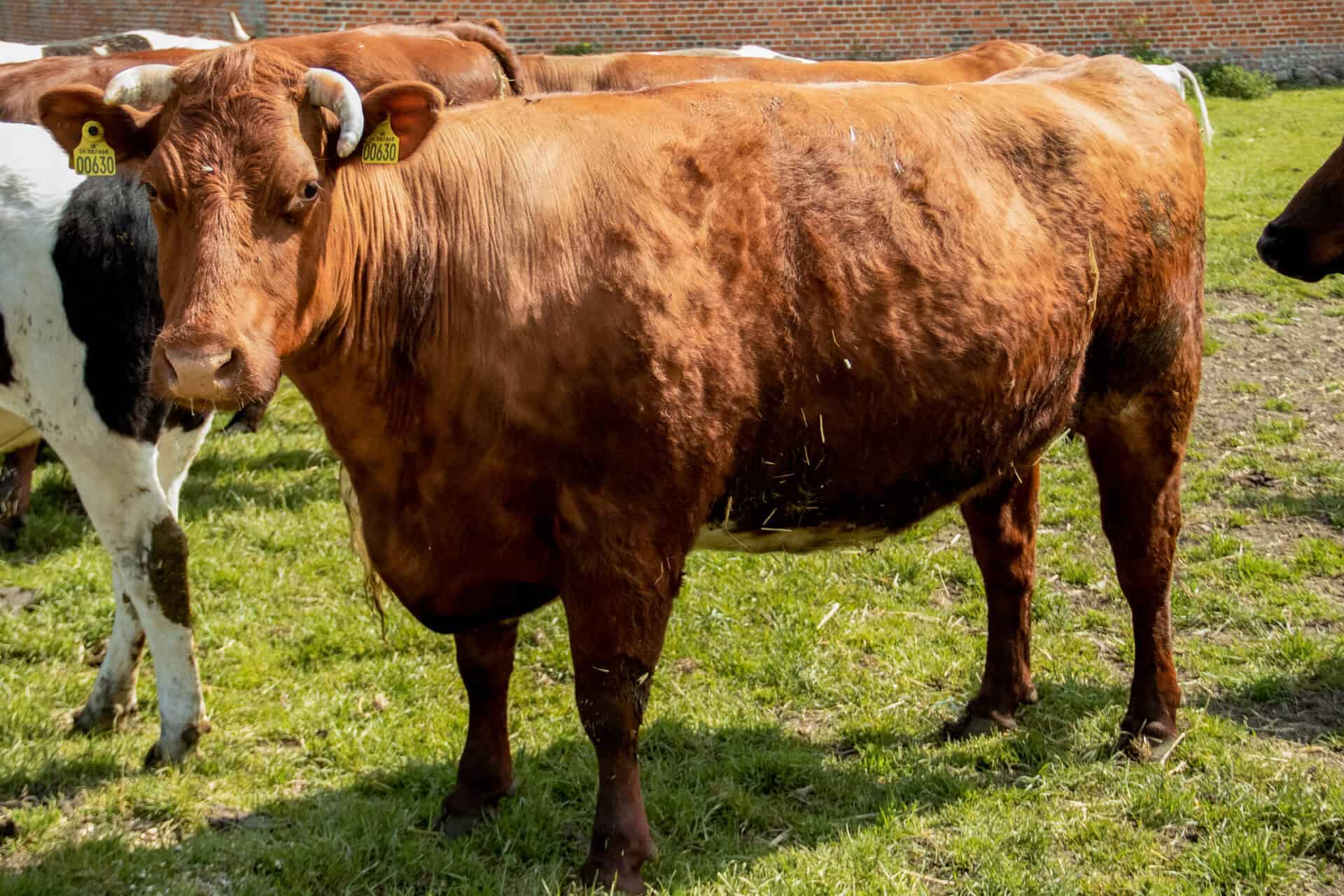Jutland Cattle
The Jutland Cattle originates from the original black and grey spotted cattle, which were widespread in Jutland in the 17th, 18th and 19th centuries, where they were the basis for the export of steers to the North German market.
The first studbook for Horses and Cattle of the Jutlandic breed was published in 1881 and contains information on 48 bulls and 53 cows. The starting material was very heterogeneous. Thus, the bulls were listed as being of both the dairy type and the meat type. The dairy type was consistently smaller than the meat type, and the average height (wither) for eight dairy type cows was 120 cm. The weight of full-grown cows was stated to be approximately 350 kg, and the annual yield was typically 800-1000 liters of milk. Animals of the meat type were consistently taller and heavier, and the tallest cow in the first studbook measured 146 cm at the wither.
In the first half of the 20th century, the breed developed into a true dairy breed with a breeding goal that was close to that of the Dutch Black and White Cattle. At the same time, color and markings were standardized.


Red Danish Dairy Breed
At the beginning of the 19th century, a distinction was made in Denmark between two types of cattle – the Jutland Cattle and the Island Cattle. In the 18th century, the Island Cattle were crossed with several red breeds. Cattle from Angel were used on Zealand and Lolland-Falster. On Funen, it was mainly cattle from North Schleswig and the larger cattle from Ballum that were used. It was especially the Funen cattle breeders who bred the red Danish Dairy breed.
The breed's name first appears at the farmers' assembly in Svendborg in 1878, and this year is considered the year of the breed's foundation. Through pure breeding, the breed was developed into a uniform red dairy breed, which was superior to the other Danish dairy breeds in terms of milk yield. The breed became internationally known in the first half of the 20th century, and breeding animals were exported to many countries and had a major influence on the cattle populations in the Baltic countries.
The breed had its heyday in the 1950s, when the rdM constituted about 70% of Denmark's cattle population. Since then, the breed has declined sharply. In 1970, the breed association abandoned the pure breeding principle.
Black and White Danish Dairy Breed
As can be seen from the description of the Jutland Cattle, the Breeding Association for the Black-mottled Jutland Cattle (SJM) from 1949 allowed the Jutland Cattle to be crossed with Dutch Cattle, and that these crossbred animals could be entered in the studbook. The breed name was simultaneously changed to the Black-mottled Danish Dairy Cattle (SdM).
The type of SdM that resulted from the crossing of Dutch black-mottled cattle with the Jutland Cattle was a combination breed that combined good milk yield with pleasantness and good slaughter quality. From around the mid-1960s, the breeding association for SdM has extensively used semen from bulls of the black-mottled Holstein-Friesian breed (HF) from the USA and Canada, and today the majority of the genes in the black-mottled cows are of Holstein-Friesian origin.

Milking cart horn
The Malkekorthorn originally comes from England. It gained popularity in Denmark in the late 1800s. In 1922, about a third of all cows in Jutland were of the Malkekorthorn breed. The strain that is best known today is the Lyngestammen.
The breed has had its own breeding association in Denmark since 1906, but breeding animals have been continuously imported. Until around 1950, however, imports were limited to Malkekorthorn bulls from England. In the 1950s, crossbreeding was carried out with bulls of red-mottled German and Dutch cattle, and in 1962 the breed association changed its name to the Breeding Association for red-mottled Danish Cattle (drK). In the following years, almost the entire Danish Malkekorthorn population was crossed with red-mottled cattle from Germany and the Netherlands.
Agersø cattle
In the early 1990s, a small herd of cattle was found on Agersø. In 2004, a genetic study was conducted that supported that the Agersø cattle are related to the original rdM. This is in accordance with the breed's evolutionary history, as rdM-70 was founded with genes from the Ø cattle.
